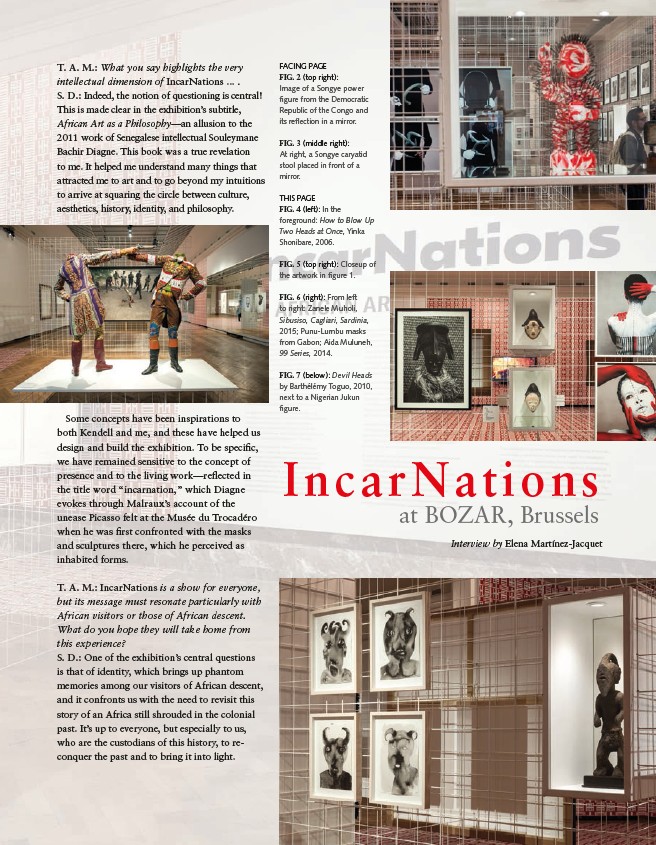
107
T. A. M.: What you say highlights the very
intellectual dimension of IncarNations ... .
S. D.: Indeed, the notion of questioning is central!
This is made clear in the exhibition’s subtitle,
African Art as a Philosophy—an allusion to the
2011 work of Senegalese intellectual Souleymane
Bachir Diagne. This book was a true revelation
to me. It helped me understand many things that
attracted me to art and to go beyond my intuitions
to arrive at squaring the circle between culture,
aesthetics, history, identity, and philosophy.
Some concepts have been inspirations to
both Kendell and me, and these have helped us
design and build the exhibition. To be specifi c,
we have remained sensitive to the concept of
presence and to the living work—refl ected in
the title word “incarnation,” which Diagne
evokes through Malraux’s account of the
unease Picasso felt at the Musée du Trocadéro
when he was fi rst confronted with the masks
and sculptures there, which he perceived as
inhabited forms.
T. A. M.: IncarNations is a show for everyone,
but its message must resonate particularly with
African visitors or those of African descent.
What do you hope they will take home from
this experience?
S. D.: One of the exhibition’s central questions
is that of identity, which brings up phantom
memories among our visitors of African descent,
and it confronts us with the need to revisit this
story of an Africa still shrouded in the colonial
past. It’s up to everyone, but especially to us,
who are the custodians of this history, to reconquer
the past and to bring it into light.
FACING PAGE
FIG. 2 (top right):
Image of a Songye power
fi gure from the Democratic
Republic of the Congo and
its refl ection in a mirror.
FIG. 3 (middle right):
At right, a Songye caryatid
stool placed in front of a
mirror.
THIS PAGE
FIG. 4 (left): In the
foreground: How to Blow Up
Two Heads at Once, Yinka
Shonibare, 2006.
FIG. 5 (top right): Closeup of
the artwork in fi gure 1.
FIG. 6 (right): From left
to right: Zanele Muholi,
Sibusiso, Cagliari, Sardinia,
2015; Punu-Lumbu masks
from Gabon; Aida Muluneh,
99 Series, 2014.
FIG. 7 (below): Devil Heads
by Barthélémy Toguo, 2010,
next to a Nigerian Jukun
fi gure.
IncarNations
at BOZAR, Brussels
Interview by Elena Martínez-Jacquet